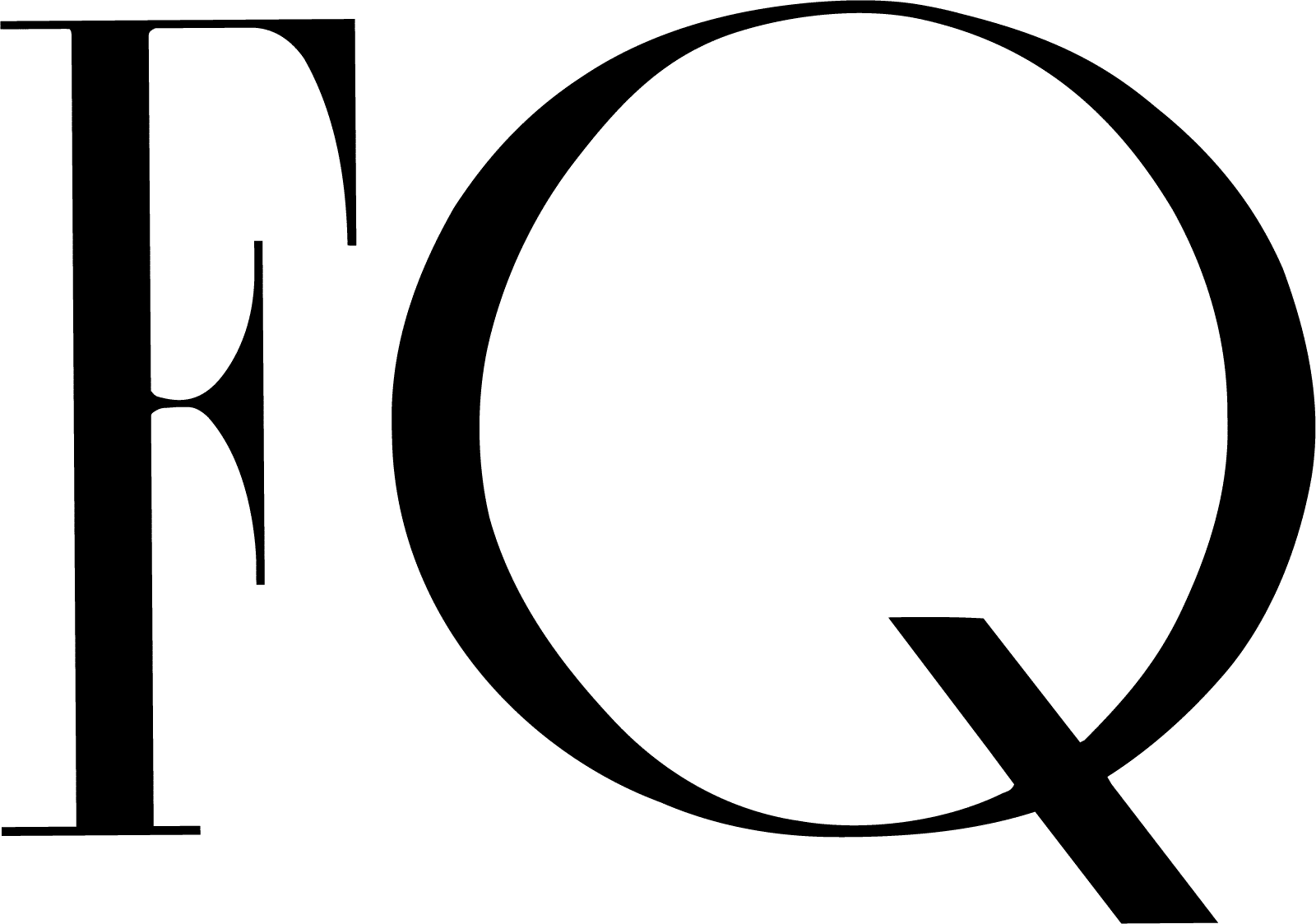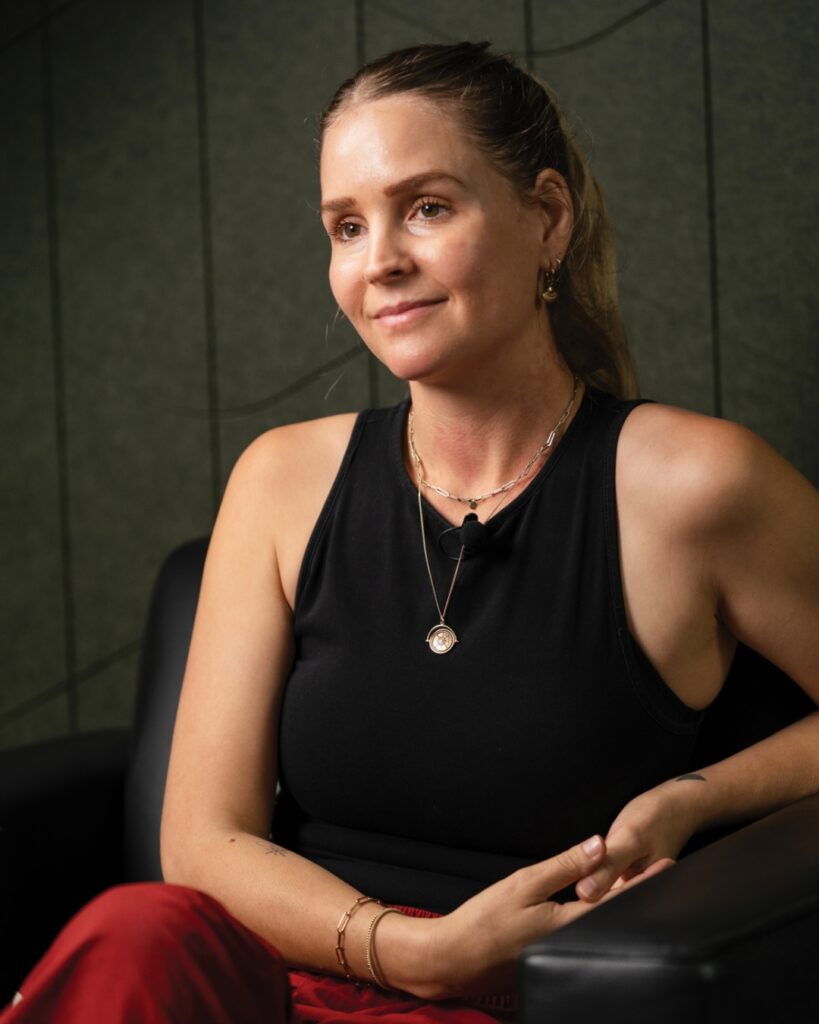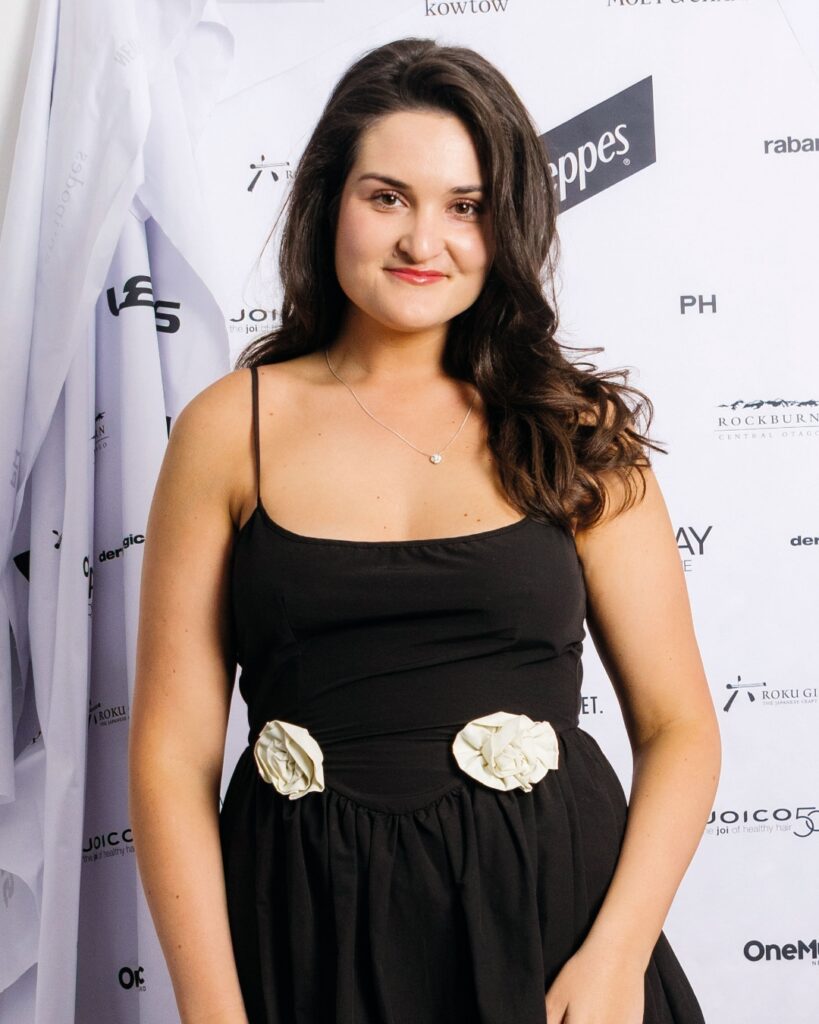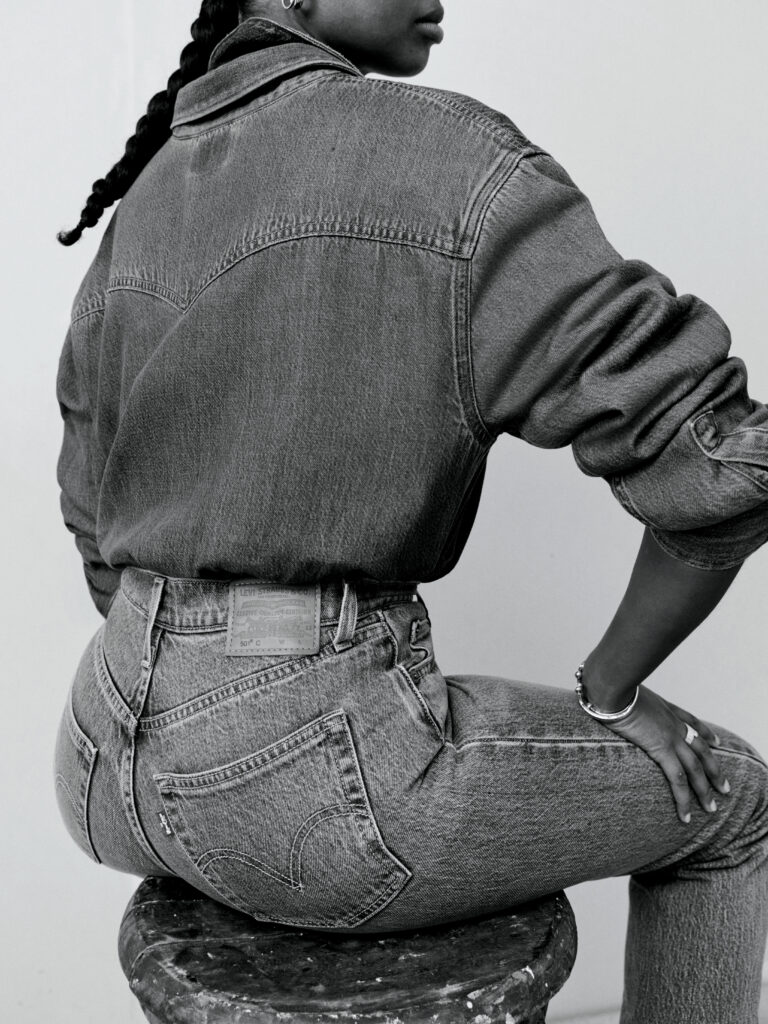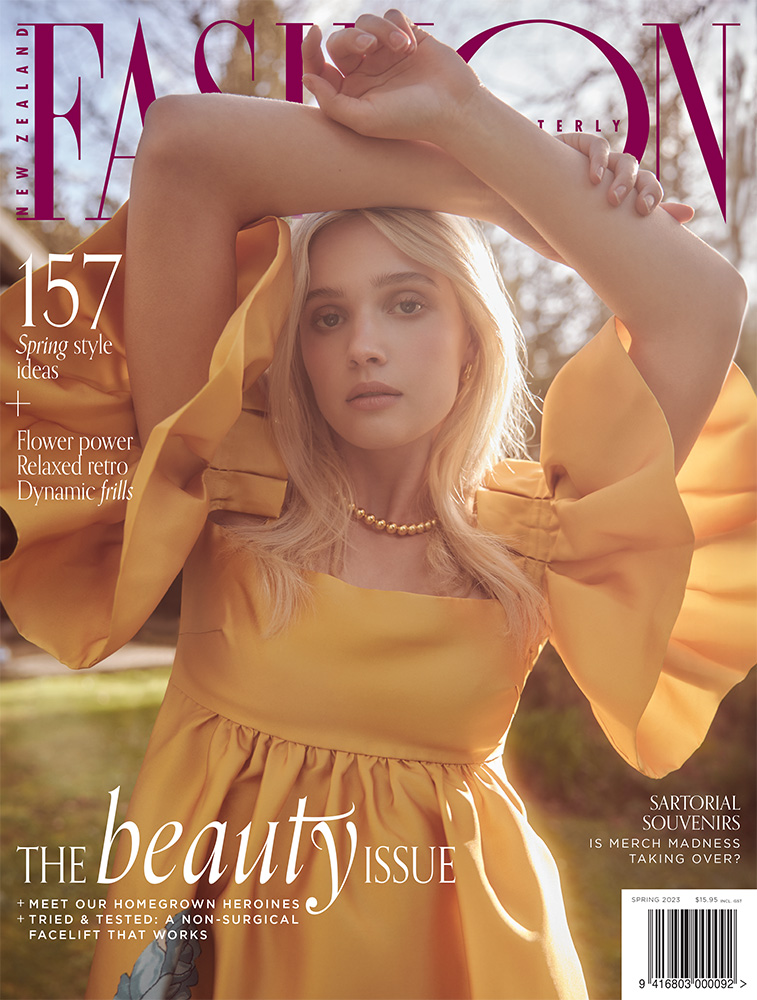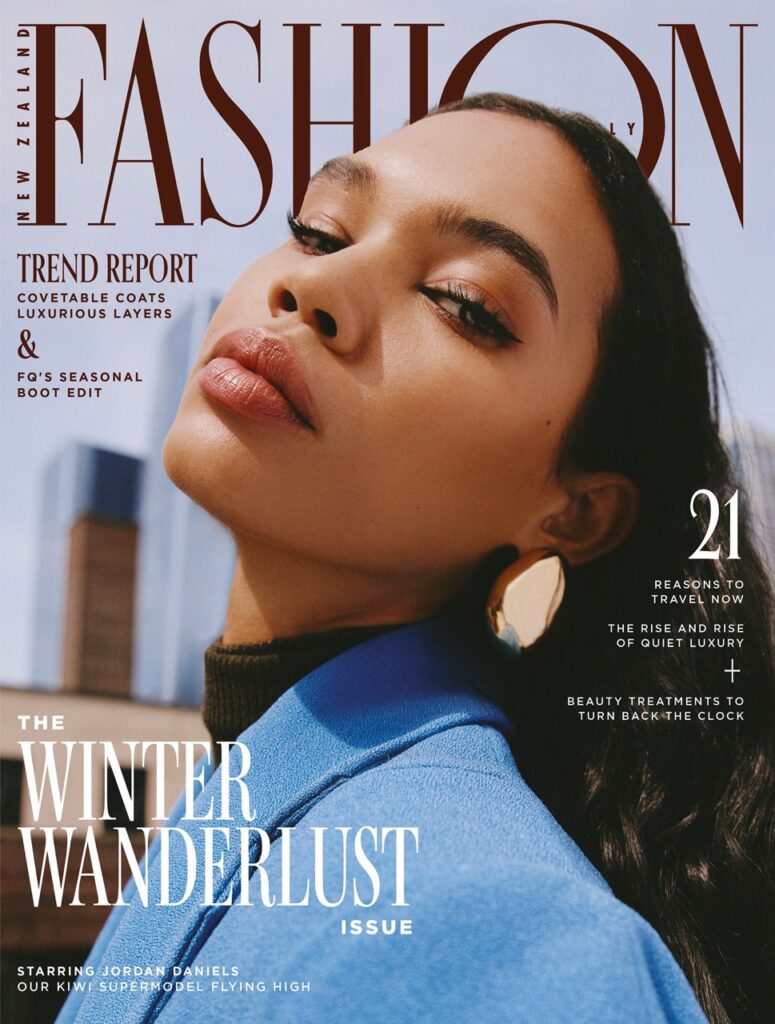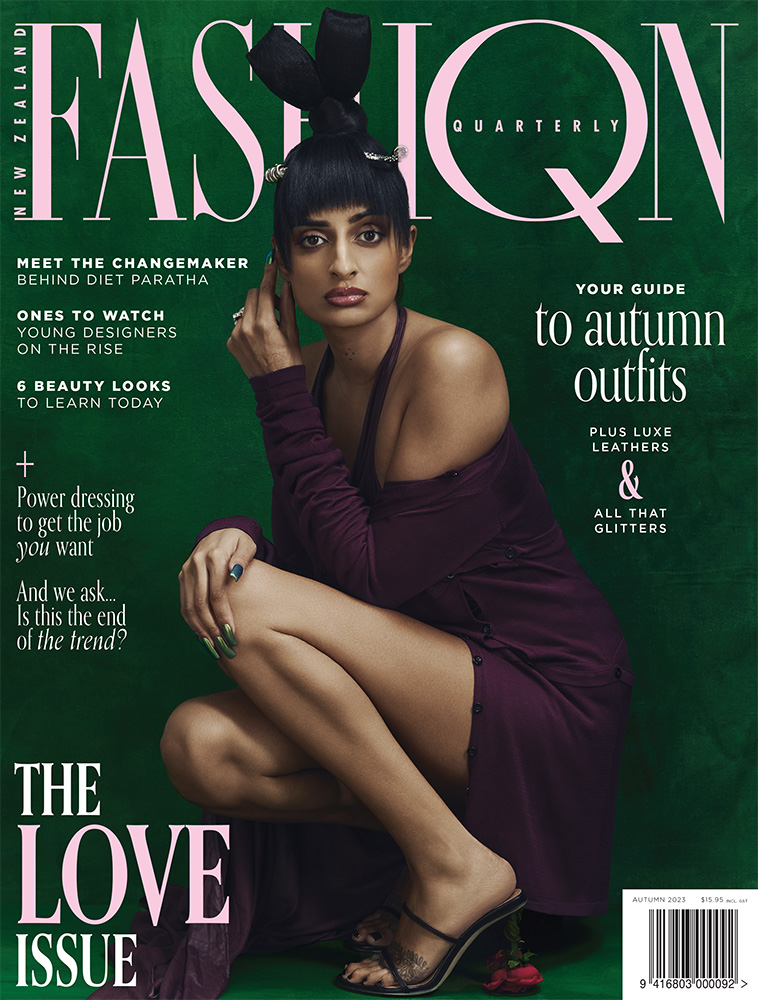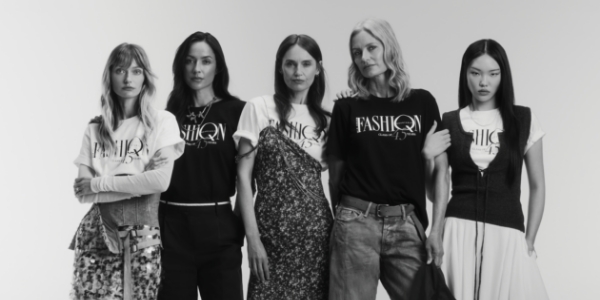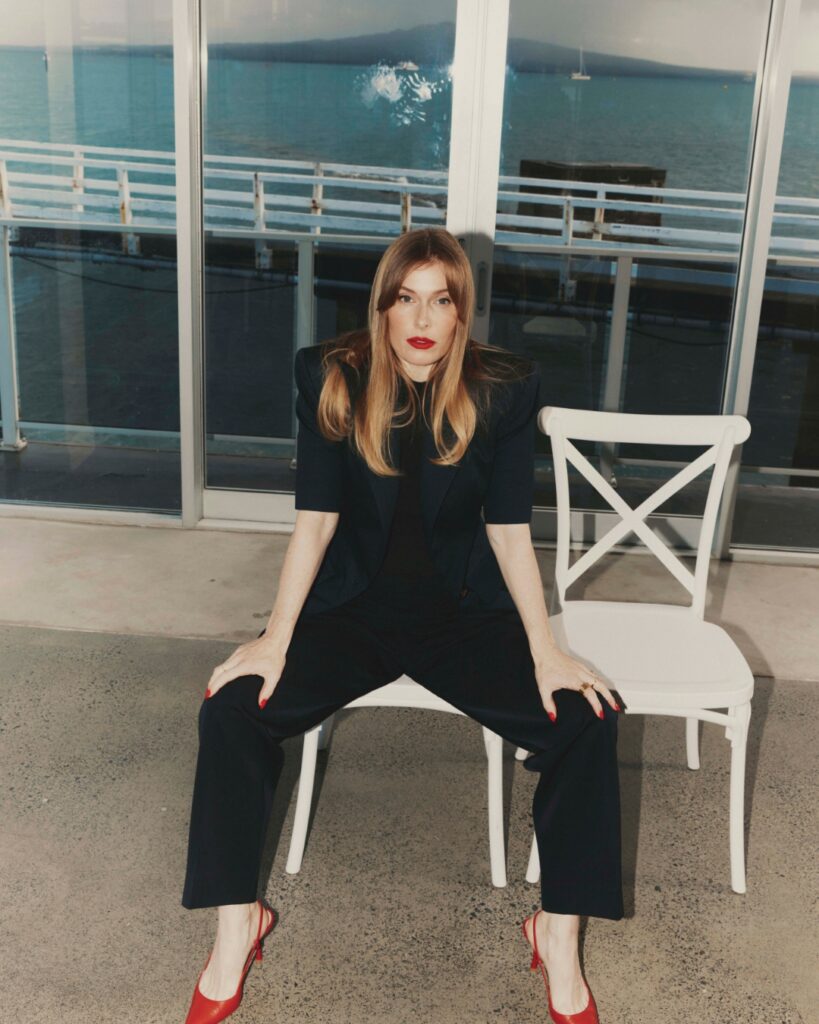
It’s a grey day at Auckland’s Okahu Bay — with dark, heavy clouds threatening rain. From where I sit, at a small table with artist Sarah Jayne Kavali, I get an almost panoramic ocean view from the expansive floor-to-ceiling windows. In the distance, a wharf juts out, beyond which lies Rangitoto Island. The usually blue ocean mirrors the colour of the sky and the waves lap wildly against the rocks. Inside, however, change is already afoot. The carpet has been ripped up, the concrete underneath polished, there’s fresh paint on the walls. The old curtains have been taken down giving the space an instant facelift, and new curtain samples in a range of neutral-hued sheers are draped over the windowsill. Chairs are stacked in the middle of the room, ready for the venue’s first official event the following evening.
Kavali herself looks put together — dressed in a cream Ellery skirt, a navy knit and black flat boots, with red lips and nails. A Celine bag is perched on the table. Despite the transformation taking place around her, she remains surprisingly calm. Known for her paper art and installations, Kavali has extended her offering with her growing portfolio of event spaces (namely Brad’s in Auckland’s Durham Lane) and now Okahu Bay. But when asked what she does, she’s the first to admit it’s difficult to encapsulate in a single phrase. “I’m an artist,” she says, though that label barely scratches the surface of her practice.
She explains that her work focuses on transforming spaces, whether through installations or commercial commissions. This knack for space manipulation might explain her transition from artist to venue owner — though the two roles aren’t as different as they may seem. “They’re not actually separate in a way,” Kavali muses. “It’s extremely cohesive and complementary. Owning spaces allows me to bring concepts to life and then pass them on to others to use in their own way.”
The beginnings
It was when she was living in Dubai that Kavali first created her signature paper installations. Working within a confined space, she was drawn to the fluidity and freedom of watercolor paper and Japanese inks. Experimenting with ink marks and phrases, she began creating work simply for the practice. She remembers getting frustrated and screwing up what she’d done. “And I can’t tell you what it was but something in my mind was like ‘put it on the wall’, ” she recalls. To her surprise, these crumpled, spontaneous creations came alive as the light danced over them, casting shifting shadows. This unexpected discovery marked the beginning of her renowned paper wall installations. Though her early pieces were born out of personal expression, they quickly gained traction in the commercial world. The installation style resonated with people, and Kavali soon found herself expanding the concept. “I realised there was something here,” she says. “The light moved the paper just through these shadows. And I loved that shadow play and the dance, and that’s how the works came to life.”
Her work has evolved to include copper and brass elements, though these lack the spontaneity and flexibility of paper. “With paper, I can scrunch it and let go.” Copper requires precision — there’s no undoing it. From a young age, Kavali found solace in art. She recalls walking home from school with hands full of “dripping wet paintings.” Art was a constant companion, especially during her school years when she’d spend hours in her room participating in colouring competitions, or simply creating for the sake of it. “I was always clear that I would study art and go to university,” she shares. True to her goal, Kavali went on to study a Bachelor of Visual Arts at the University of Auckland, and rather than following the traditional gallery route, opted for autonomy and creative freedom, setting up her art shows in unconventional spaces.
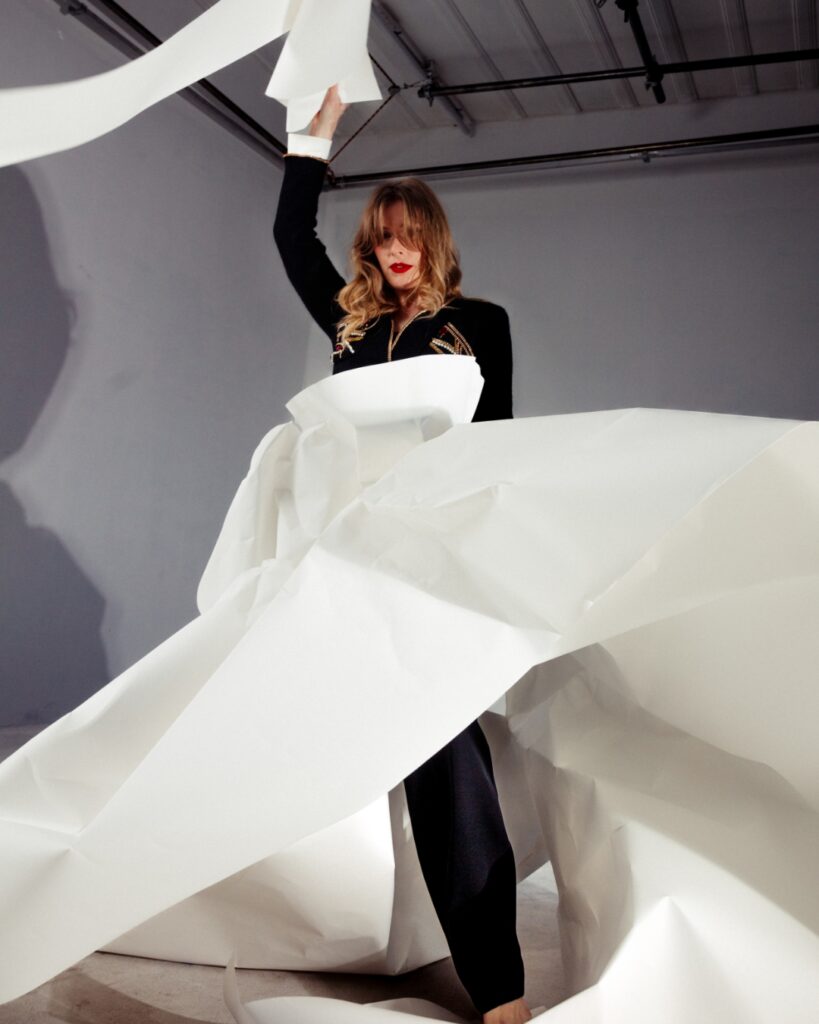
The art of curating events
For years, she has brought her artistry to life through projects across public and private spaces. Highlights include her nostalgic 2023 Maggie Marilyn set at Australian Fashion Week, where she transformed a Sydney sailing club at Rushcutters Bay. And, the festive favourite — Faradays Christmas Tree — a live installation, crafted from recycled Faradays bags. There was the memorable Moët campaign hosted in her former Parisian chic inner-city apartment where she envisioned people-sized gold baubles alongside model Georgia Fowler, and Moët, of course. For this campaign Kavali used her apartment, and marketed it as an exclusive private event space with only 10-yearly slots. Her approach was selective, catering to high-end clients who shared her vision. Showcasing incredible business nous Kavali realised the demand for high-quality, unique spaces extended beyond her exclusive penthouse concept.
This insight led to the launch of Brad’s, a beautiful 19th-century blue stone space. “Brad’s has a unique design ethos,” Kavali says. “It can accommodate an intimate fine dining experience or a 500-person gig, all while preserving its heritage feel.” The name itself, Brad’s, is a nod to her playful branding, evoking character while connecting to the building’s storied past. Brad’s and her Okahu Bay space are both housed in heritage buildings — a responsibility that Kavali and her team embrace with enthusiasm. “We both feel passionate about giving these iconic spaces a new lease of life,” she says. Each venue embodies a different chapter of Auckland’s history, while her renovations blend respect for the past with a vision for the future. But it’s her personal touch and thought of the granular detailing, which often goes unseen, that can make the biggest difference. “The sound, the lighting, the temperature, and even the scent, all contribute to the atmosphere,” she says. Ultimately, she’s creating bespoke experiences designed to leave a lasting impression.
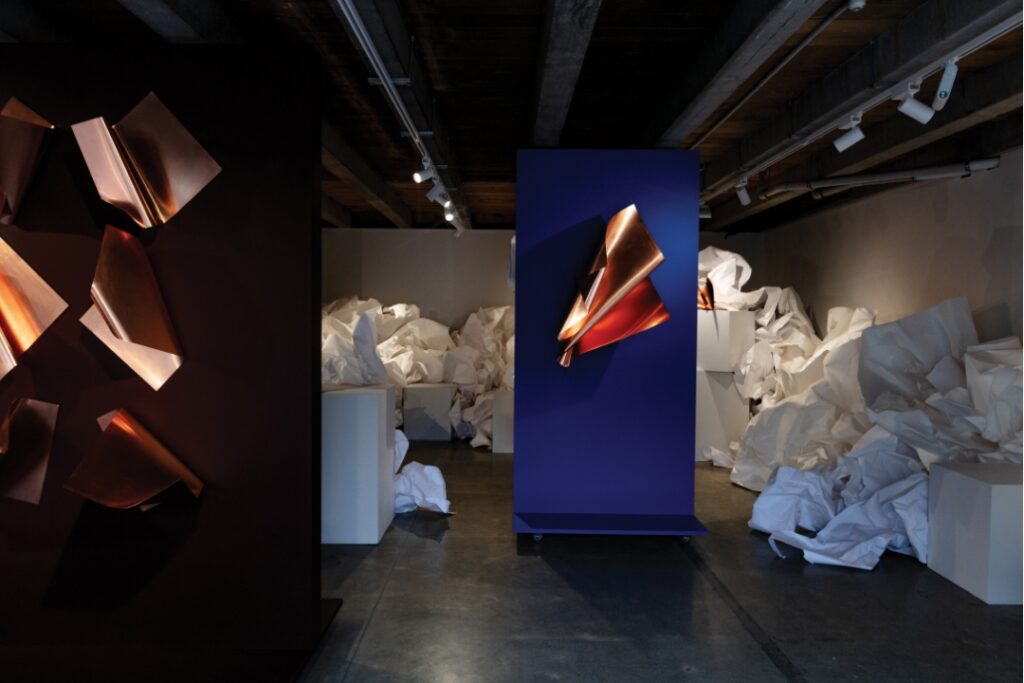
Building a creative process
With a growing repertoire, Kavali has found the need to develop a structured creative process. She works better creatively in the morning so schedules afternoon meetings where possible. Unlike the all-nighters she once pulled, she carves out time slots for creative work. Right now, she’s busy. Very busy. And even though she’s being pulled in a million different directions, it’s clear she loves it. Kavali is the first to admit her work continually pushes her into new, sometimes uncomfortable, territory. “But that’s where the magic happens,” she says with a smile. And with that, she’s off to sculpt another unforgettable space.
